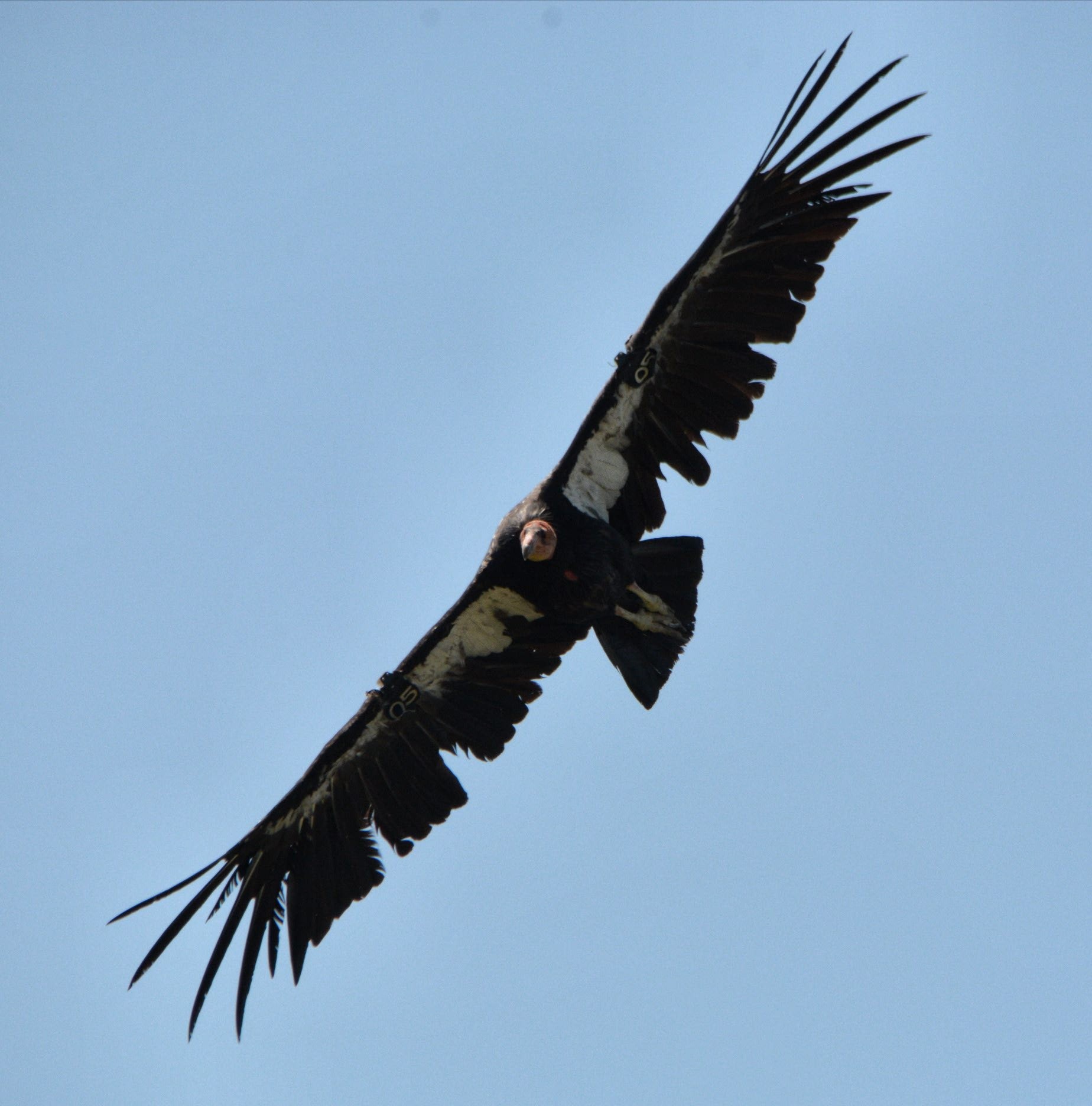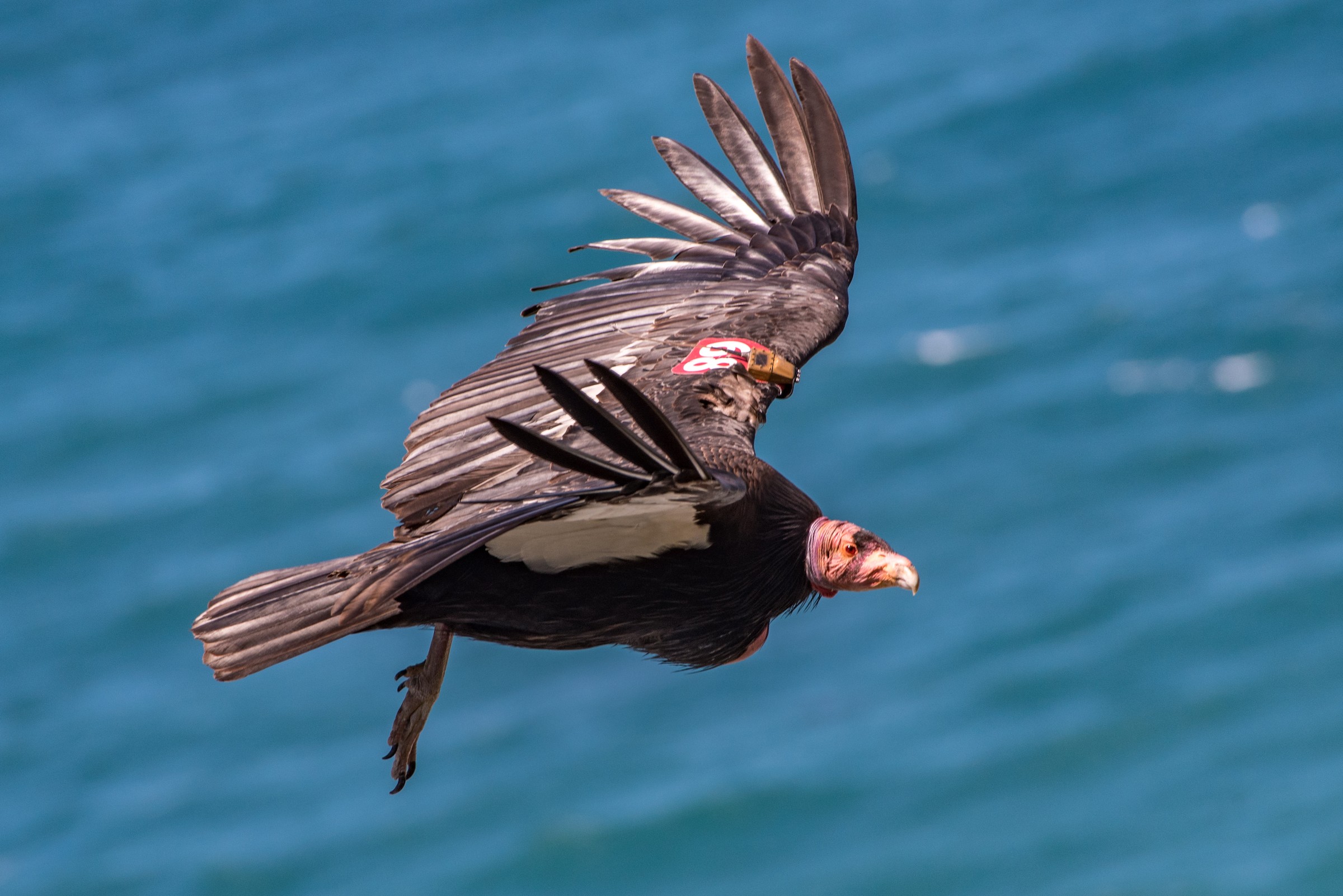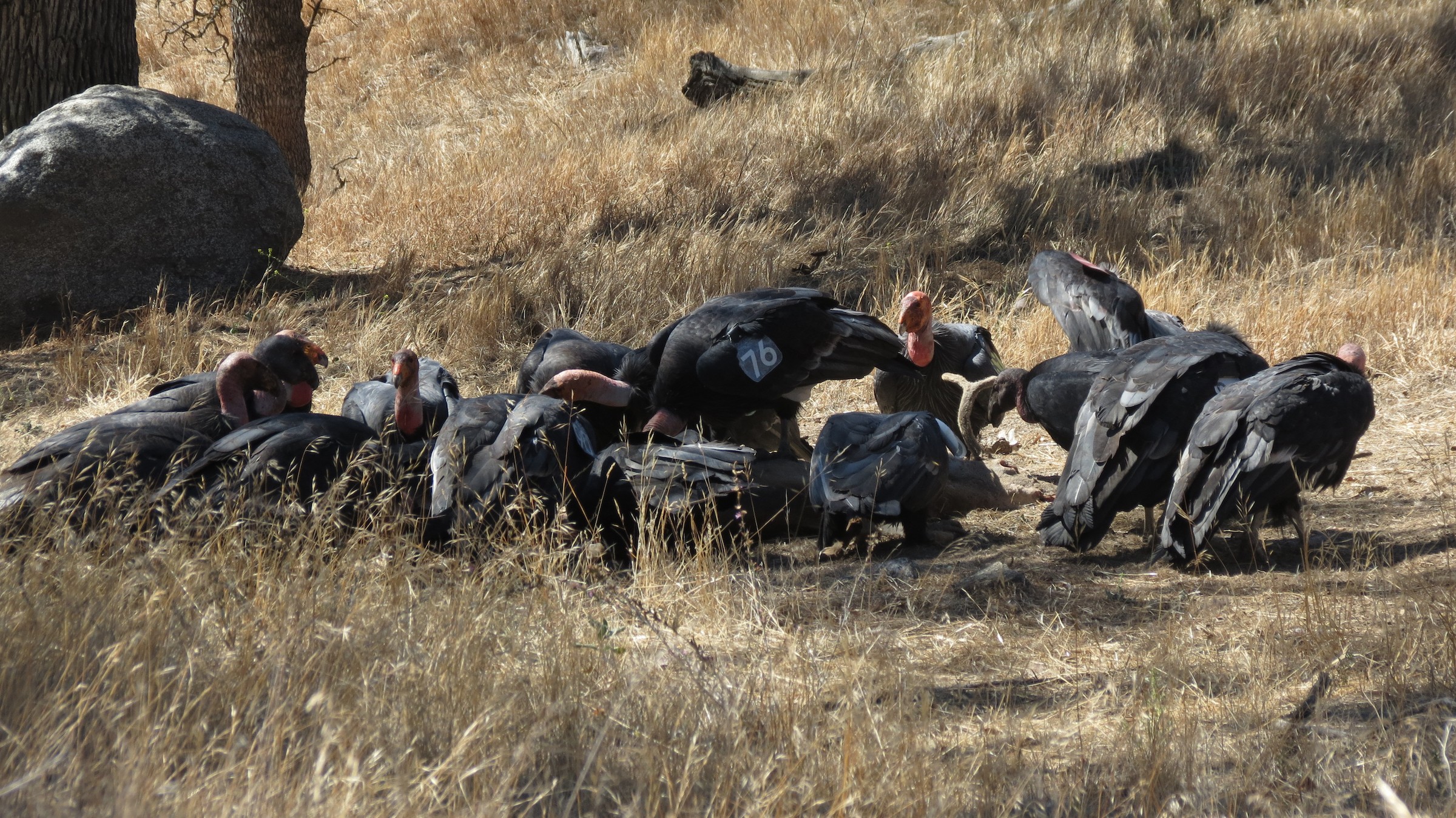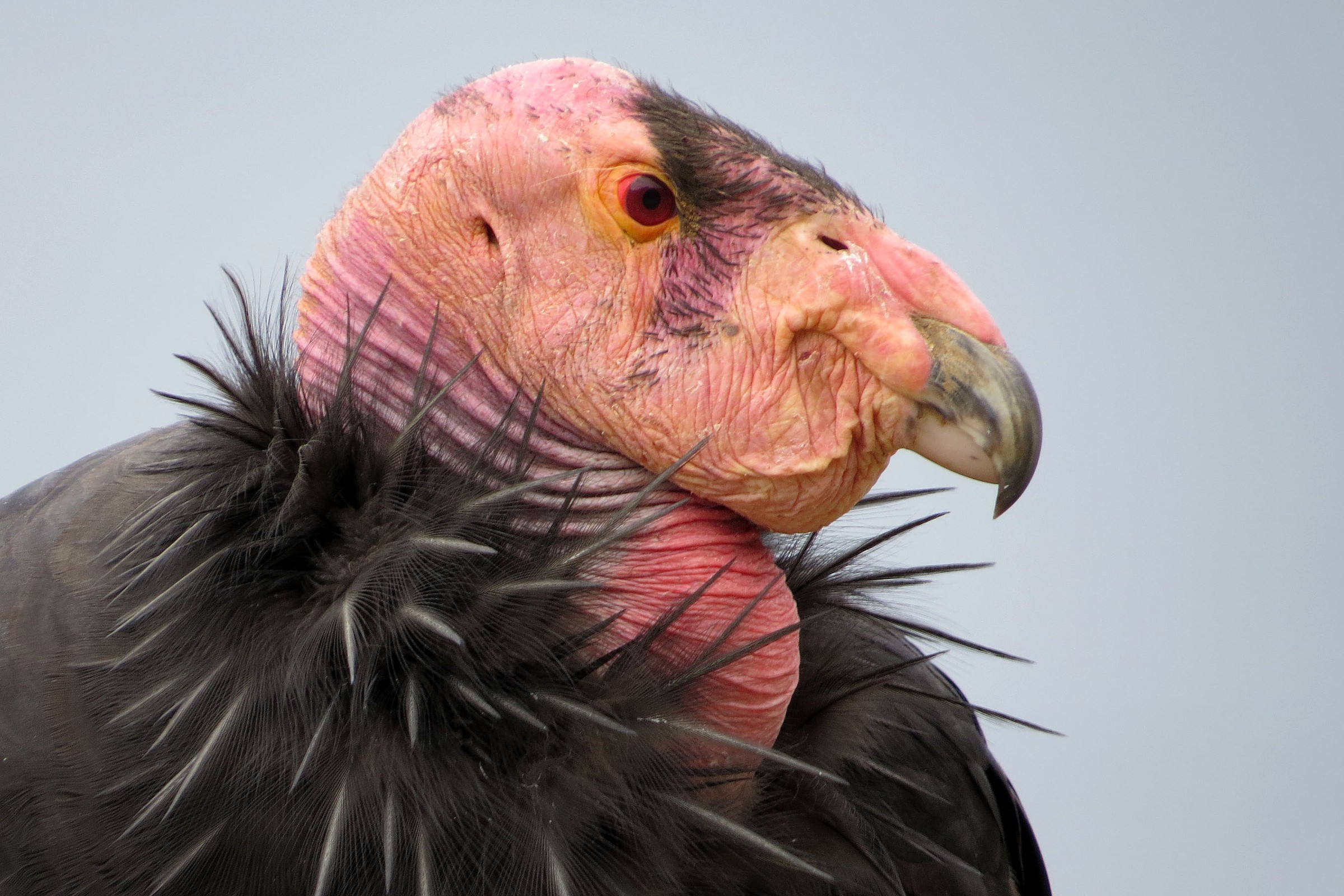(Photo © Daniel Sachse/The Macaulay Library at the Cornell Lab of Ornithology)
(Photo © Mark Schocken/The Macaulay Library at the Cornell Lab of Ornithology)
(Photo © Jay Langford/The Macaulay Library at the Cornell Lab of Ornithology)
Beginning in January of 1992, condors were reintroduced to California. Today, there are approximately 430 California Condors in the world, and roughly half of them live in the wild. They are still one of the rarest birds in the world.
(Photo © Chuck Burt/The Macaulay Library at the Cornell Lab of Ornithology) A major threat to condors today is lead poisoning. This is usually the result of accidentally eating ammunition fragments in the carcasses of animals that humans have hunted. Luckily, important steps have been taken to eliminate lead-based ammunition. Additionally, conservation groups work to monitor and treat the birds, and supply lead-free carcasses for the wild birds to scavenge.
(Photo © Jeff Culler/The Macaulay Library at the Cornell Lab of Ornithology) Scavenge, you say? Scavenging means that the condor doesn’t hunt, it eats animals that are already dead. California Condors will fly over 150 miles in search of carcasses to eat, looking for groups of other scavengers who have already found the meal. They scare off any smaller species, but are happy to eat alongside other condors. The condor’s baldness is an advantage. If they had feathers on their heads, cleaning up after dinner would be a lot more difficult!(Photo © Nigel Voaden/The Macaulay Library at the Cornell Lab of Ornithology)
The Lab of Ornithology has a CondorCam so you can observe these amazing birds anytime. Check out the livestream or our favorite clips !
~Brigid Lucey






